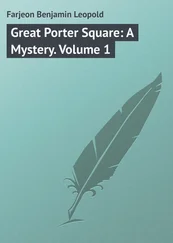These materials spilled onto the floor, reducing by half the walkable area of an apartment already compromised by scattered clothing. At the very center of this mass was a laptop, with a cursor blinking on the last line of a document, the one that would make sense, or a kind of it, anyway, of all the ones surrounding it.
Obscuring the keyboard were his notes from last night, the flashes he’d had of the monk, just before he’d found the wordless woman. There were still a few hours till he had to brief Penerin. His real work, the next part of it, was glaring at him: charting the axes of Darasa’s being, if not Larent’s, or Renna’s, or his own. Although if he could find his way to accounting for the men peopling his histories — and they were all men — they might well end up accounting for him, given his ancestry. He was, after all, only the latest branch of the tree. He swallowed the last of the bread and pushed on toward the center.
Squinting into that bright stretch of rock, his own reflection obscuring the fine scrawl covering the wall’s mirror-black surface, the mendicant Darasa, poet, chronicler, exegete, and priest, would have wished for powers of vision greater than men are granted as he searched it for sense.
Whatever he could make out he transcribed into a book of palm leaves. The uncommonly curly script, a thousand years old and part of a language caught between Pali and Sinhala, had been molded by these leaves. Where straighter lines would have separated the plant fibers, rounded ones, running across rather than between them, did not. The writing of Darasa’s day, less rounded but distinctly curvy, answered in its own way to the same constraints.
The graffiti covering that wall at Sigiriya was only partly intelligible to him, first, because his grasp of the continuum running from ancient Pali to seventeenth-century Sinhala, his own tongue, was strongest at its termini and progressively less certain toward its midpoint; and second, because the inscriptions were multiply superimposed, sometimes in seven or eight layers.
They’d accreted over the twelve centuries since the island had been ruled from here and not Anuradhapura, the ancient capital farther north, or, as now—1664—Kandy, to the south. At the time each inscription was made, it would have appeared more distinctly than the ones overwritten, the marks sharper, more pronounced. But little had been inscribed here since the monks re-founded the monastery two hundred years ago, though at the base of the rock this time, and not on the palace grounds themselves, which had served that purpose as recently as 1100. The monks’ maintenance, high atop the rock, was thought too costly by recent kings, so the grounds were left to decay.
The years had flattened the writing. A kind of visual parity had overtaken the marks, making it difficult to say which inscriptions came last or first, or even to say which stretch of words or symbols went together with which others. Depending on how one grouped them, there were dozens of ways of reading the inscriptions. All of this only compounded his difficulties.
The monk had, some months back, cut a few words into the wall himself, in a blank area near its foot, discreet and permanently shaded from the sun. Mostly this was to test the tactile properties of the rock, the ease or difficulty with which the original inscriptions would have been made; and to see how the wall held a perfectly new inscription, in the hope that this might help him date the layers.
But perhaps he also did it simply to leave a few words behind, like the rest. His translated as “A lesser chronicler.” He wondered how the phrase might someday be overlain, misunderstood possibly, and taken up, perhaps, into something greater by that misunderstanding.
He folded the palm book and placed it, along with the thin, plain stylus, into the sheath he kept at his waist. The day’s transcribing was done. He would add these notes to the rest back at the temple.
For all the complications, he’d managed to give sense to some of the scrawlings. Most seemed addressed to the paintings that covered the rock fortress during Kassapa’s reign, particularly those of women, “long-eyed,” “golden-skinned,” whose essential features, judging by the inscriptions, were stillness and silence:
Those ladies of the mountain
They did not give us
The twitch of an eyelid
The paintings had been done after the fall of Kassapa, around 500, when his deposer, Moggallana, moved the capital back to Anuradhapura. Those living in the villages surrounding Sigiriya would have made the massive rock (and the wall at its base) theirs again, while the palace proper was converted into a monastery.
A few of the paintings, smaller ones, remained along the path spiraling hundreds of feet into the air, ascending the fortress’s edge. They would have survived for their location in the recesses and caves, which shielded them, along with the sentries of that era, from the elements.
There were also other inscriptions Darasa had at least partly interpreted, ones of a more mundane sort: declarations made between lovers, light rhymes, nicknames, and simple identifications (so-and-so from such-and-such). Amid these were the more significant ones, the ones he was after, carrying intimations of life in Sigiriya across the centuries. They dated as far back as 500, around the time of the death of Mahanama, the leading scholar of his era, and the primary compiler of the Great Chronicle (the Mahavamsa), a clerical history of the island covering the thousand years preceding his death.
Some of the graffiti spoke of noble families and their scandals, others of the lack of rice or meat, still others of populist discontent and the deposing of kings — and indeed of the fall of the fortress kingdom itself, to Moggallana, the rightful heir, apparently.
Darasa hoped these records might enrich the commentary he was preparing on the Great Chronicle. More to the point, though, what made the task pressing, was how they might inflect his contribution to the Lesser one (the Culavamsa), the still-living record of the kingdom. It had been accumulating in fits and starts from the time of Mahanama’s death up through to the arrival of the Dutch envoys thirty years ago. That arrival had disrupted the keeping of the record, and a handful of the most senior priests — Darasa, not yet 50, being the youngest of them — was charged with updating it, through a portrait of the most recent decades of the kingdom. When it finally arrived, he would say to himself sometimes, the light of the past, even the very distant past, must change the complexion of the present.
Interpreting the inscriptions was arduous and uncertain work. As was simply collecting them. He’d only begun to account for the many inscriptions carried by the architecture of the court and palace above. So he ascended again. This was his third trip. The monk left the mirror-wall behind and edged his way along the path. In the guard stations he passed several renderings of the Buddha, in bleeding shades of red, orange, and yellow. The path narrowed as it wrapped around the interior face of the fortress, which was hidden from both the entrance to the court and the nearby townships, partly by the thick forest at its base.
Further toward the top, the cliff turned sheer and the path narrow, in some places reducing to mere foot-holes. The shallow steps ascended at a radical angle, as a great height had to be scaled in the smallest distance. He leaned against the rock. At this height, already two hundred feet from the forest floor, the winds were muscular, death-dealing. He’d knotted the loose fabric of his robe to give the currents less to work with.
In previous eras, rope bridges had crisscrossed this part of the mountain, connecting various levels of the fortress on the exposed top, where the palace lay, to the plateaus, embankments, and interior caves below. As Darasa stepped from foot-hole to foot-hole, pressing his weight against the cliff, he wondered, as every person who had ever got to the palace above must have, how many would have lost their footing, been snatched by the winds, toppled from the bridges, only to expire in the coconut palms and shrubs below.
Читать дальше












